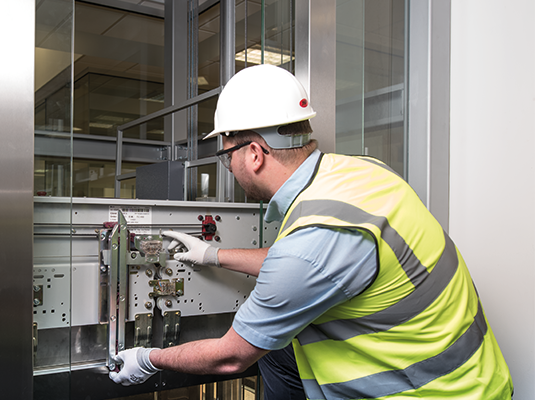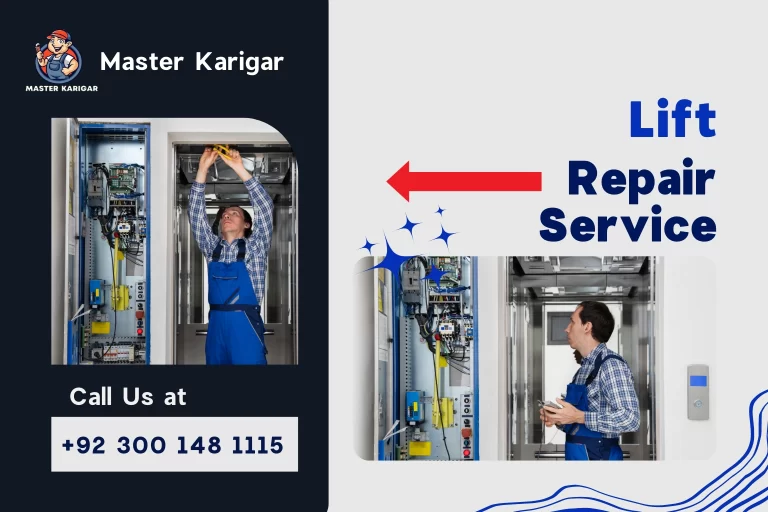Expert Tips for Ensuring Security During Comprehensive Lift Fixing Treatments
In the world of detailed lift fixing procedures, safety and security stands as a critical problem that requires thorough focus to detail and adherence to developed methods. The intricate nature of collaborating with lifts demands a cautious approach to securing against potential risks and making sure the wellness of workers associated with repair tasks. Amidst the elaborate dance of fixing and keeping lifts, a bad move can have serious repercussions, emphasizing the crucial need for specialist ideas to navigate these procedures with utmost care and readiness. As the complicated interplay of equipment and human treatment unravels, a critical strategy to security comes to be the cornerstone for effective fixing operations.
Security Equipment Demands
The safety equipment requirements for lift fixing procedures are necessary to make sure the health of maintenance employees. Proper security equipment not only protects employees from prospective hazards but likewise enhances effectiveness and accuracy during repair service jobs. When working with lifts, maintenance workers should stick to strict security methods by putting on suitable gear such as difficult hats, safety and security goggles, gloves, steel-toed boots, and high-visibility vests. These items are developed to supply defense versus head injuries, eye damages, hand injuries, foot injuries, and boost visibility in the work environment to stop mishaps.
Construction hats are critical for guarding versus head injuries from bumping or falling objects into overhanging frameworks. Security goggles safeguard the eyes from debris, chemicals, or triggers that might be produced during repair. Handwear covers supply hand security from cuts, burns, or electrical shocks, while steel-toed boots supply foot defense from hefty objects or equipment. High-visibility vests make certain that upkeep workers are easily seen by others, lowering the threat of mishaps due to inadequate exposure. By strictly sticking to security gear needs, upkeep personnel can mitigate dangers and work successfully to preserve and repair lifts.

Equipment Inspection Checklist
To guarantee the maintenance personnel's safety and the proper functioning of lifts, an extensive equipment evaluation checklist is vital prior to beginning any repair work procedures. lift servicing companies. This checklist should consist of a thorough exam of all parts such as wires, wheels, electric systems, and security mechanisms. It is crucial to evaluate for any kind of indications of deterioration, corrosion, or damages that might jeopardize the lift's structural honesty or functional efficiency
In addition to mechanical parts, the assessment checklist should incorporate security features like emergency situation brakes, limitation switches, and overload sensing units. These security devices play an essential duty in stopping accidents and making certain individual defense during lift procedure.
Moreover, verifying the calibration of control systems, confirming correct ventilation and illumination within the lift shaft, and looking for any blockages or particles are important action in the inspection process. Routine upkeep and adherence to the equipment evaluation list not just enhance safety procedures yet also extend the life expectancy of the lift system, lowering the likelihood of expensive repair services or unanticipated failings.
Threat Recognition Techniques
Using methodical analysis techniques, danger recognition strategies are used to determine potential risks within lift repair procedures. These techniques involve an extensive evaluation of the repair service atmosphere, devices, and jobs included to determine any type of risks that might result in injuries or mishaps. One typical strategy is the Work Safety And Security Evaluation (JSA), where each action of the repair service process is thoroughly evaluated to identify potential hazards and determine the very best precaution to alleviate them. Furthermore, Failure Setting and Consequences Analysis (FMEA) can Extra resources be utilized to anticipate possible failing points in the repair treatment and establish safety nets to resolve them proactively.

Emergency Situation Feedback Preparedness
With a concentrate on guaranteeing swift and reliable feedback to unforeseen situations, emergency situation response preparedness is a critical facet of preserving security during lift fixing treatments. Focusing on emergency preparedness entails establishing clear communication channels, assigning certain duties and responsibilities, and carrying out routine drills to examination action times and procedures.
Key components of emergency situation reaction readiness include having easily accessible emergency treatment kits, fire extinguishers, and emergency situation get in touch with details plainly showed. It is vital to train all personnel associated with lift repair treatments on emergency situation reaction methods, consisting of exactly how to securely leave the location in case of a fire or other emergency situations.
Furthermore, developing a thorough emergency response plan certain to lift fixing circumstances can aid minimize potential dangers and ensure a punctual and worked with response in the event of a case. Routinely examining and updating this plan based upon lessons picked up from past drills or cases is necessary to continually improve precaution during lift fixing procedures.
Ongoing Security Training
Continual education and training in security procedures is a basic component of try here making sure the continuous security of workers during lift repair service treatments. Recurring safety training plays an essential duty in maintaining employees notified about the current safety criteria, methods, and ideal practices in the sector (lift servicing companies). By providing routine training sessions, employees can stay up-to-date on prospective threats, safe job treatments, and emergency protocols details to lift fixing atmospheres
Routine safety training also aids enhance the value of complying with security standards and treatments whatsoever times. It infuses a safety-conscious way of thinking among workers, advertising a culture of security within the workplace. Furthermore, ongoing training allows employees to freshen their expertise and skills, improving their preparedness to deal with any unpredicted safety and security challenges that might occur throughout lift fixing procedures.
To ensure the performance of ongoing safety training, it is important to customize the content to the specific dangers and demands related to lift repair procedures - lift breakdown. Employers need to frequently assess training demands, supply possibilities for hands-on method, and encourage open interaction pertaining to safety and security issues amongst all employees entailed in lift repair service operations
Final Thought
In conclusion, ensuring safety and security throughout extensive lift repair service procedures is vital for preventing crashes and injuries. By complying with safety gear needs, performing equipment this page assessments, identifying risks, preparing for emergencies, and offering ongoing security training, employees can decrease dangers and create a safe job setting. Prioritizing safety procedures and staying watchful throughout the repair work procedure will aid secure both employees and the equipment being serviced.
When functioning on lifts, maintenance workers must stick to stringent security methods by putting on suitable equipment such as difficult hats, safety goggles, handwear covers, steel-toed boots, and high-visibility vests. One typical strategy is the Task Security Evaluation (JSA), where each action of the repair work procedure is meticulously examined to recognize prospective hazards and identify the best security procedures to minimize them.Constant education and training in safety and security methods is a fundamental component of guaranteeing the continuous safety of personnel throughout lift repair service treatments.Regular security training likewise assists reinforce the importance of following safety and security guidelines and procedures at all times. By complying with safety and security equipment demands, carrying out tools assessments, recognizing threats, preparing for emergencies, and giving continuous safety training, employees can lessen dangers and create a risk-free work atmosphere.